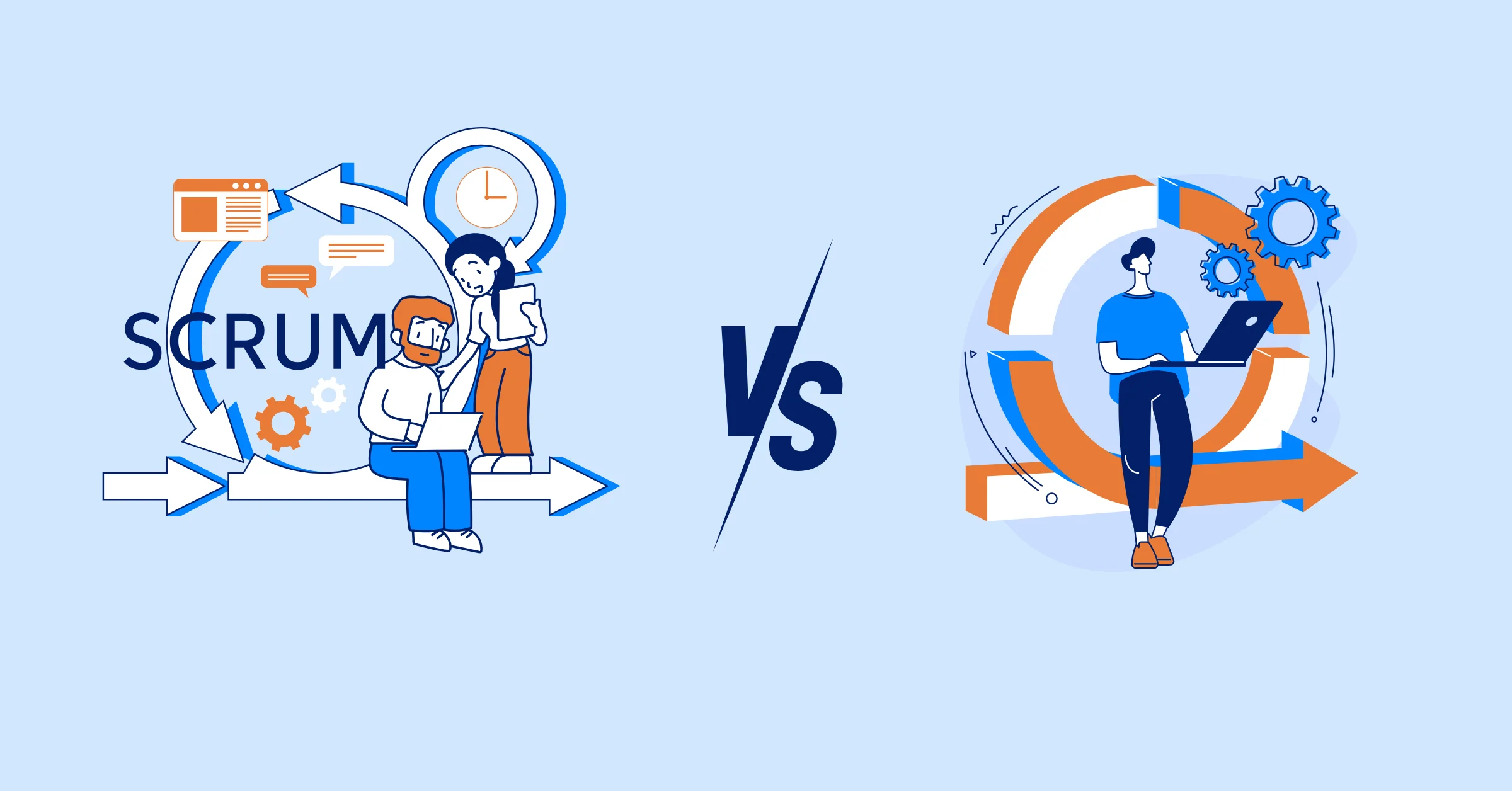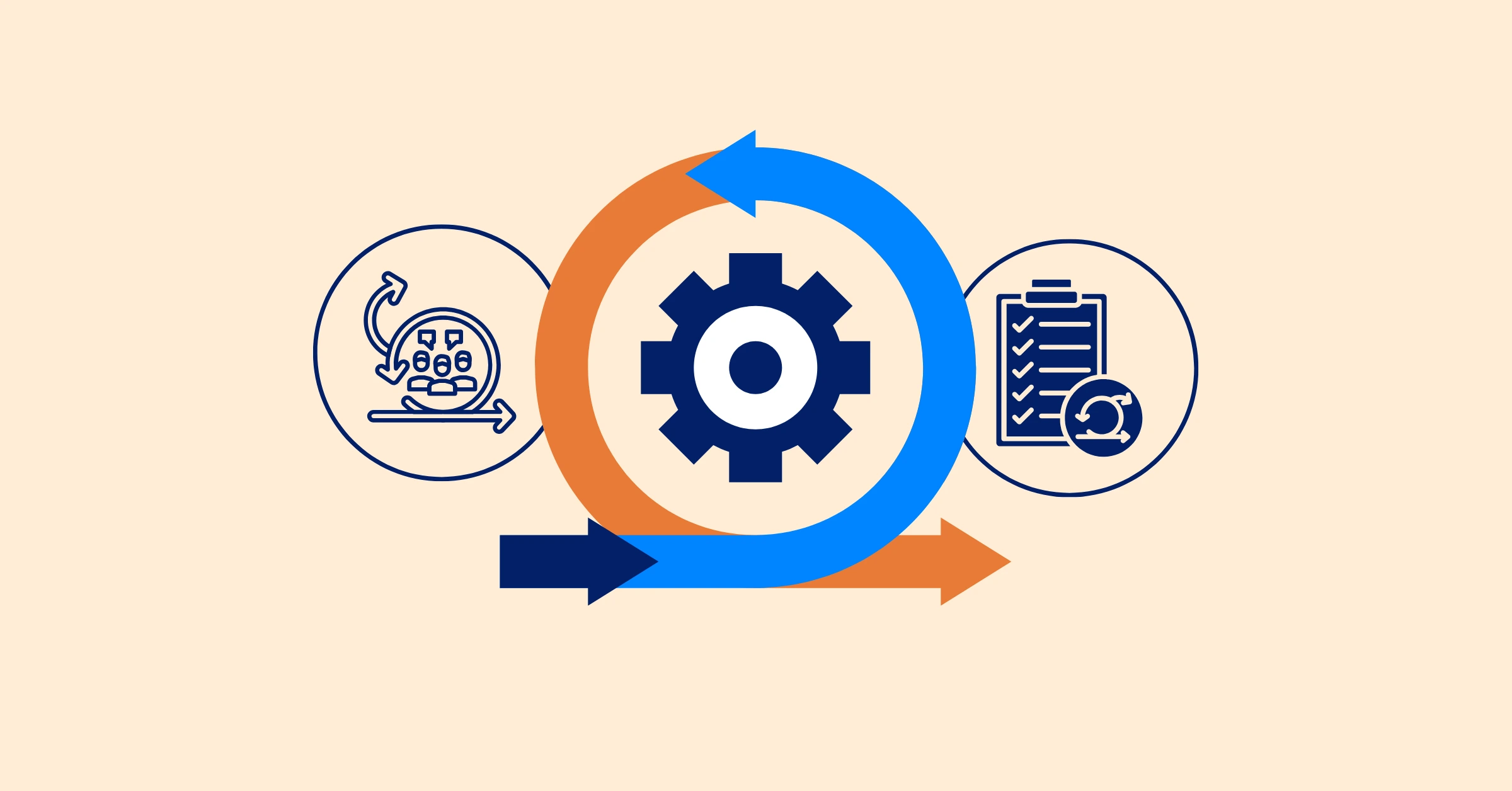From Agile to WBS: 80 Key Project Management Terms You Should Know
Learn 80 key project management terms with this A to Z glossary to improve communication and execution in your projects.
Project management terms are just the common words and phrases people use to talk about projects. They make it easier for teams to stay on the same page and avoid confusion. Whether you’re building an app, planning an event, or working on a construction site, knowing these terms helps you understand how projects are organized and tracked.
This article, From Agile to WBS: 80 Essential Project Management Terminology You Should Know, is a straightforward guide to the basics. We’ve kept the definitions clear and listed them alphabetically so you can find what you need quickly. From Agile’s flexible way of working to the step-by-step approach of a Work Breakdown Structure (WBS), these terms will give you the language to plan and manage projects with confidence.
What are Project Management Terms?
Project management terms are the words and phrases used to describe different parts of a project—like tasks, deadlines, milestones, or workflows. They act like a shared language that helps teams understand each other and stay organized.
For example, when someone says “milestones,” everyone knows it means a big checkpoint in the project. When they mention “scope,” it’s clear they’re talking about the overall goals and boundaries of the work.
Knowing these terminology makes it easier to follow conversations, understand project plans, and keep everyone on the same page, whether you’re new to project management or have been doing it for years.
Why Knowing Project Management Terms Matters
Knowing project management glossary isn’t just for the experts—it’s for everyone working on a project. When you understand the language, you’re able to communicate clearly, avoid confusion, and make sure everything runs smoothly.
Here’s why it’s so important:
- Clear Communication: Imagine trying to explain a task to someone, but you're not speaking the same "project language." It can lead to misunderstandings. When everyone knows the phrases, it’s easier to get your point across and stay on the same page.
- Teamwork Made Easier: Understanding terms like “backlog” or “milestone” means everyone is talking about the same thing. This helps the team stay coordinated and work together more efficiently.
- Setting Expectations: When you say a task is in the "sprint backlog" or there’s a “critical path,” people know exactly what you mean. This reduces surprises and makes expectations clear from the start.
- Less Confusion, More Action: The more familiar you are with the terms, the less time you spend explaining them. You can focus on getting things done instead of repeating what certain phrases mean.
- Building Confidence: Whether you’re new to managing projects or you’ve been in the game for a while, knowing the right word helps you come across as professional and confident. You’ll feel more sure of yourself when talking to clients or stakeholders.
In short, understanding project management terms helps everything flow better— making your job easier, and your project more successful.
80 Common Project Management Terms
Below is a comprehensive list of 80 common project management terminologies, arranged alphabetically, with detailed yet clear explanations to help you understand their role in managing projects effectively.
Basic Project Management Terms
These are the everyday words you’ll hear in almost any project.
1. Task Management
Task management is the process of creating, organizing, prioritizing, assigning, tracking, and completing individual work items (tasks) to achieve project or business objectives.
- Creation & Planning: Defining each task’s scope, owner, and deadlines
- Prioritization: Ordering tasks by importance or urgency
- Assignment & Collaboration: Allocating tasks to team members and facilitating communication
- Tracking & Reporting: Monitoring progress, updating statuses, and identifying bottlenecks
- Closure: Verifying completion criteria and recording outcomes for future improvement
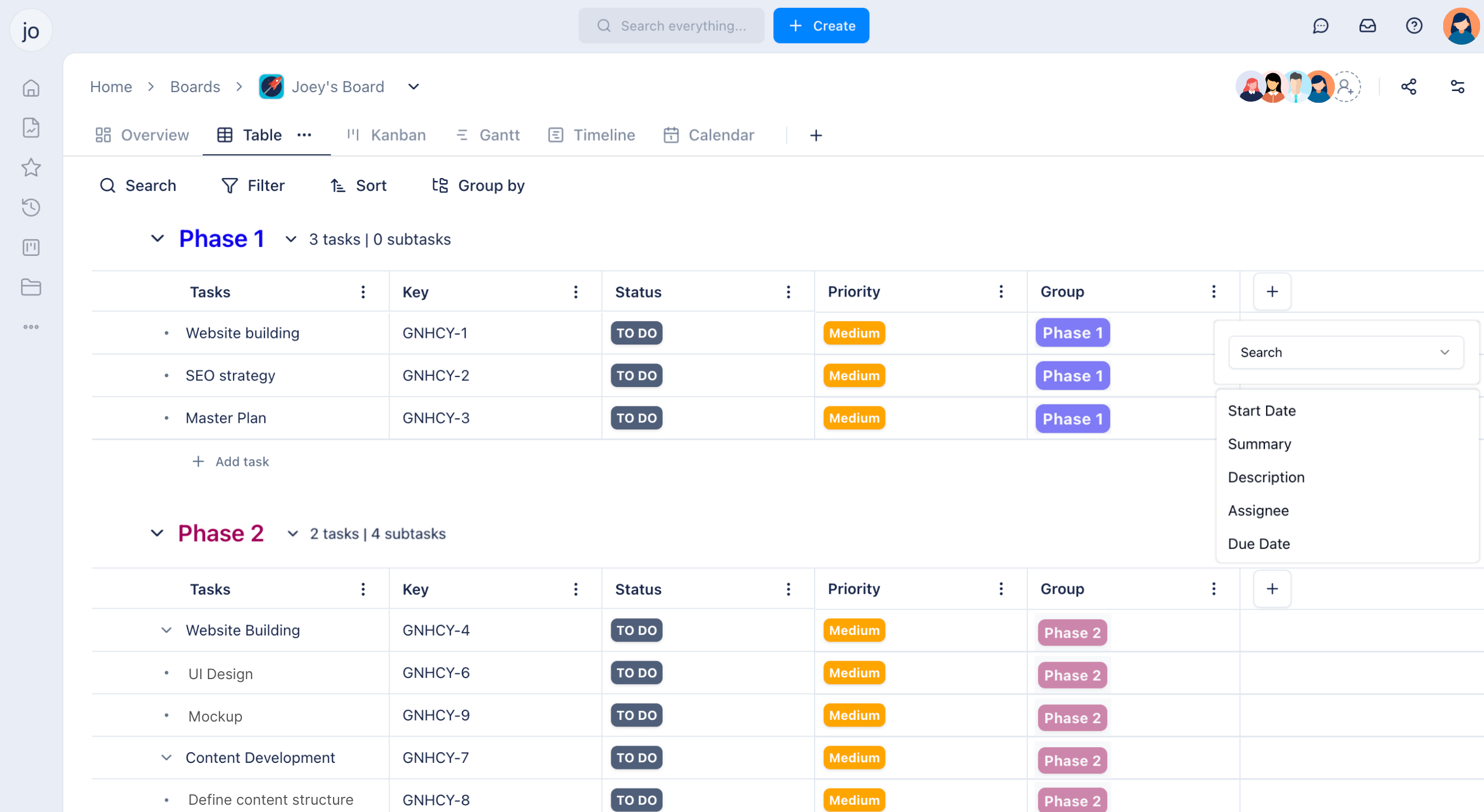
2. Deliverable
A specific, measurable output produced during a project, such as a document, software feature, or physical product. Deliverables are linked to milestones, must meet predefined acceptance criteria, and are critical to achieving project objectives, serving as tangible evidence of progress.
3. Milestone
A milestone is a key moment or achievement in a project that marks progress. Think of it like a checkpoint along the way. It’s something significant that shows you’ve completed a major part of the project, like finishing a product prototype or hitting a specific target date.
For example, in a website redesign, a milestone could be the completion of the homepage design or the launch of the beta version. Reaching a milestone means you've completed something important and can move on to the next step.
(Discover more 10 Examples of Milestones in Project Management and How to Track Them)
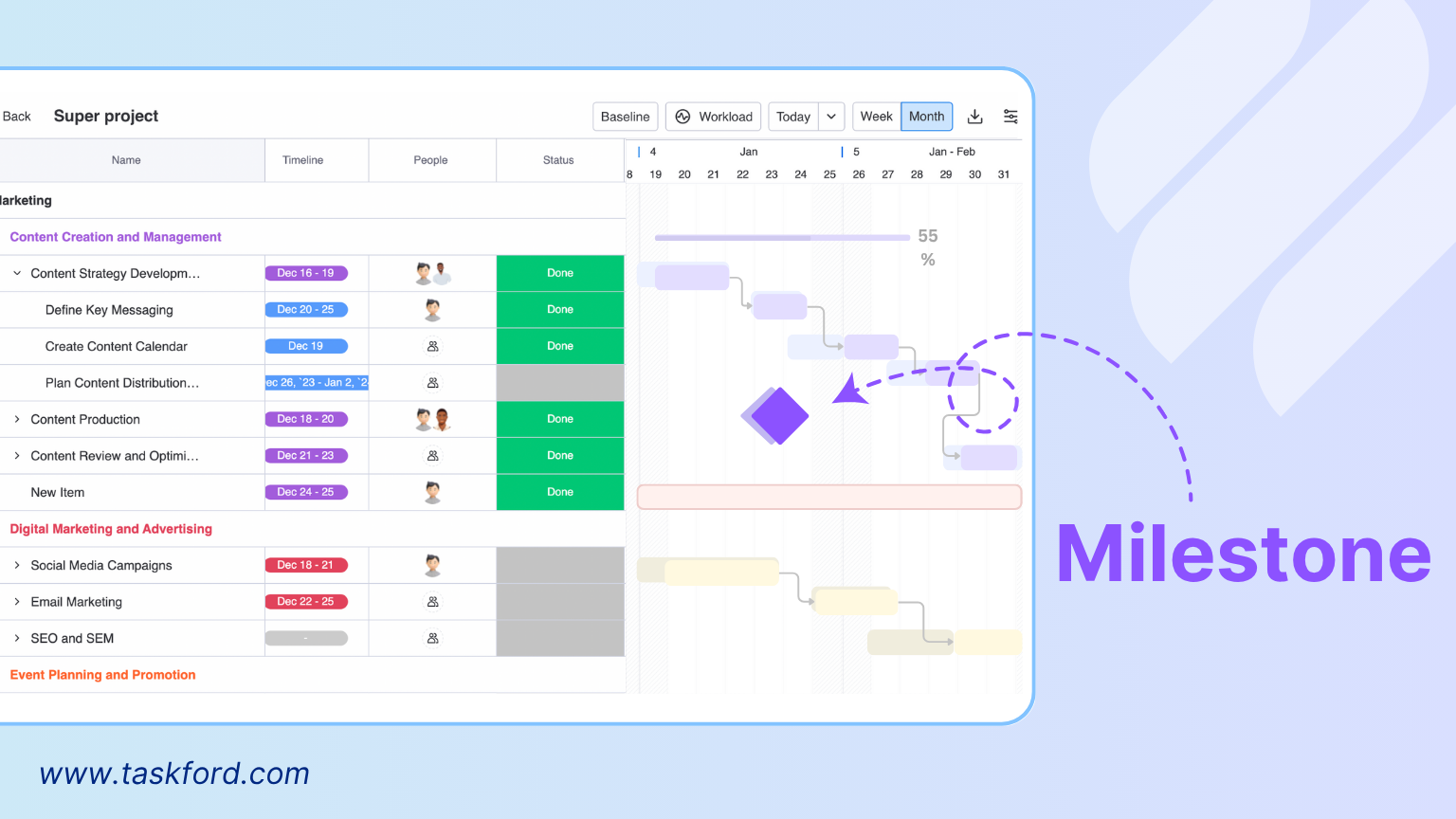
4. Goal
The overarching purpose or desired outcome of a project guides all activities and decisions. Goals are broad, such as “enhance operational efficiency,” and are broken into specific, measurable objectives to provide direction and focus for the project team.
5. Stakeholder
Any individual or group with an interest in or influence on the project’s outcome, including clients, team members, sponsors, or end users, requires active engagement to manage expectations.
6. Key Stakeholder
A key stakeholder is an individual or group with significant influence on or interest in the project, such as a sponsor, client, or executive. Their needs and decisions shape the project. For example, a client might dictate a product’s core features.
7. Communication Plan
A communication plan is a strategy for how information will be shared with everyone involved in the project. It defines who gets updates, what information they’ll receive, how it will be communicated, and when.
For example, your communication plan might say that stakeholders receive weekly progress reports via email, while the project team has daily check-ins to stay aligned. A solid communication plan keeps everyone on the same page, reducing confusion and ensuring the project stays on track.
8. Dependency
A dependency in project management refers to a relationship between tasks where one task can’t start or finish until another task is completed. These connections, also known as project dependencies, are crucial for creating an accurate project timeline and ensuring everything happens in the right order.
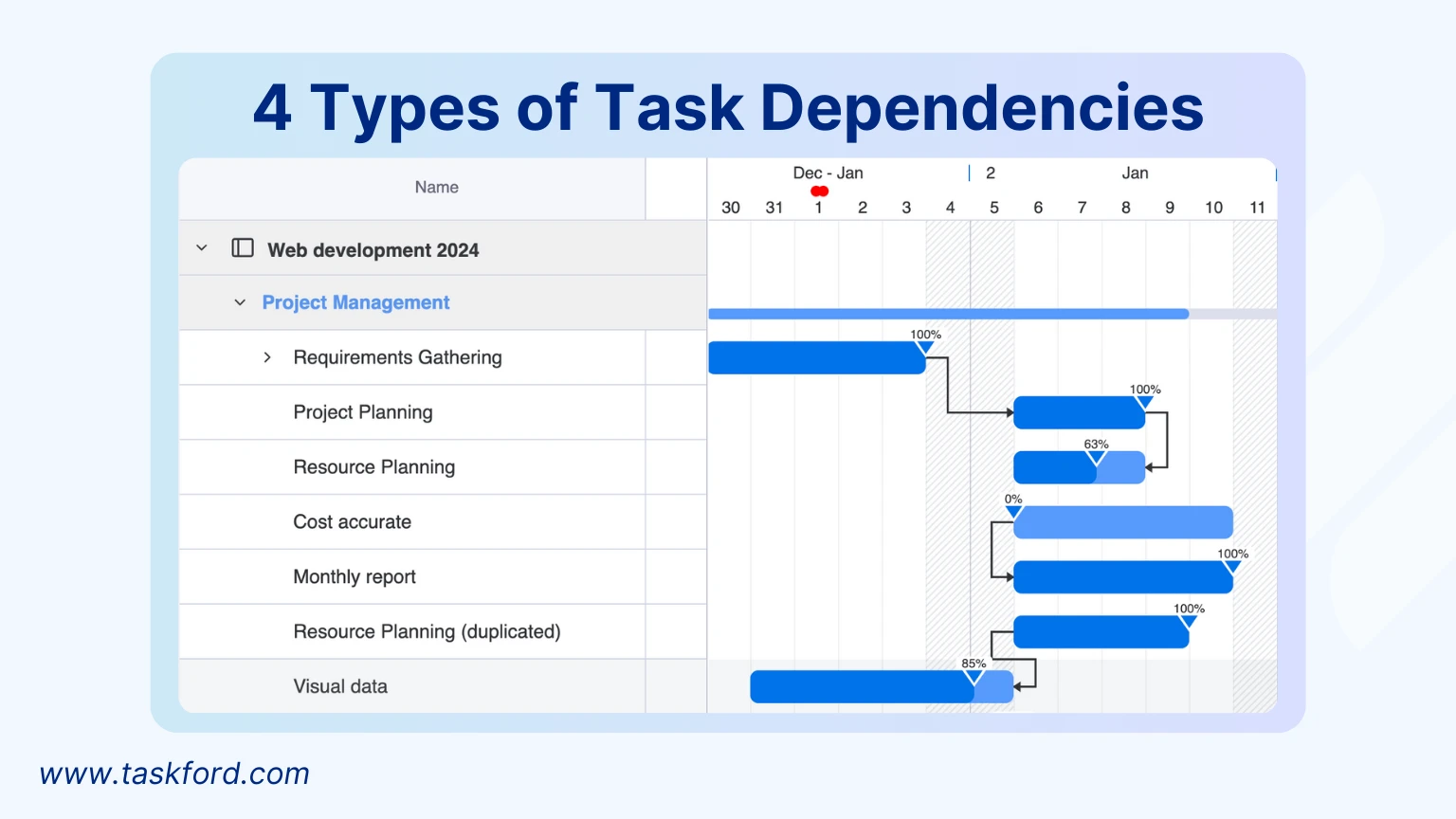
For example, if you’re building a house, you can’t start painting the walls until the drywall is installed—that’s a finish-to-start dependency. In some cases, tasks can overlap, like starting a new task before the previous one is completely finished, which would be a start-to-start dependency.
9. Issue Log
An issue log is a tool used to track and manage problems that come up during a project. Whenever something goes wrong or an obstacle arises, it gets logged in the issue log. This helps the project team stay on top of any challenges and ensures they are addressed promptly.
Project Planning and Tracking Terms
These terms are all about organizing, scheduling, and keeping projects on track.
10. Backlog
Backlog is a list of tasks, features, or work items that need to be done but haven’t been started yet. Think of it as a “to-do list” for a project.
In Agile projects, for example, you’ll often hear about the product backlog (all the work that needs to be done for a product) and the sprint backlog (the smaller set of tasks the team commits to finishing during a sprint).
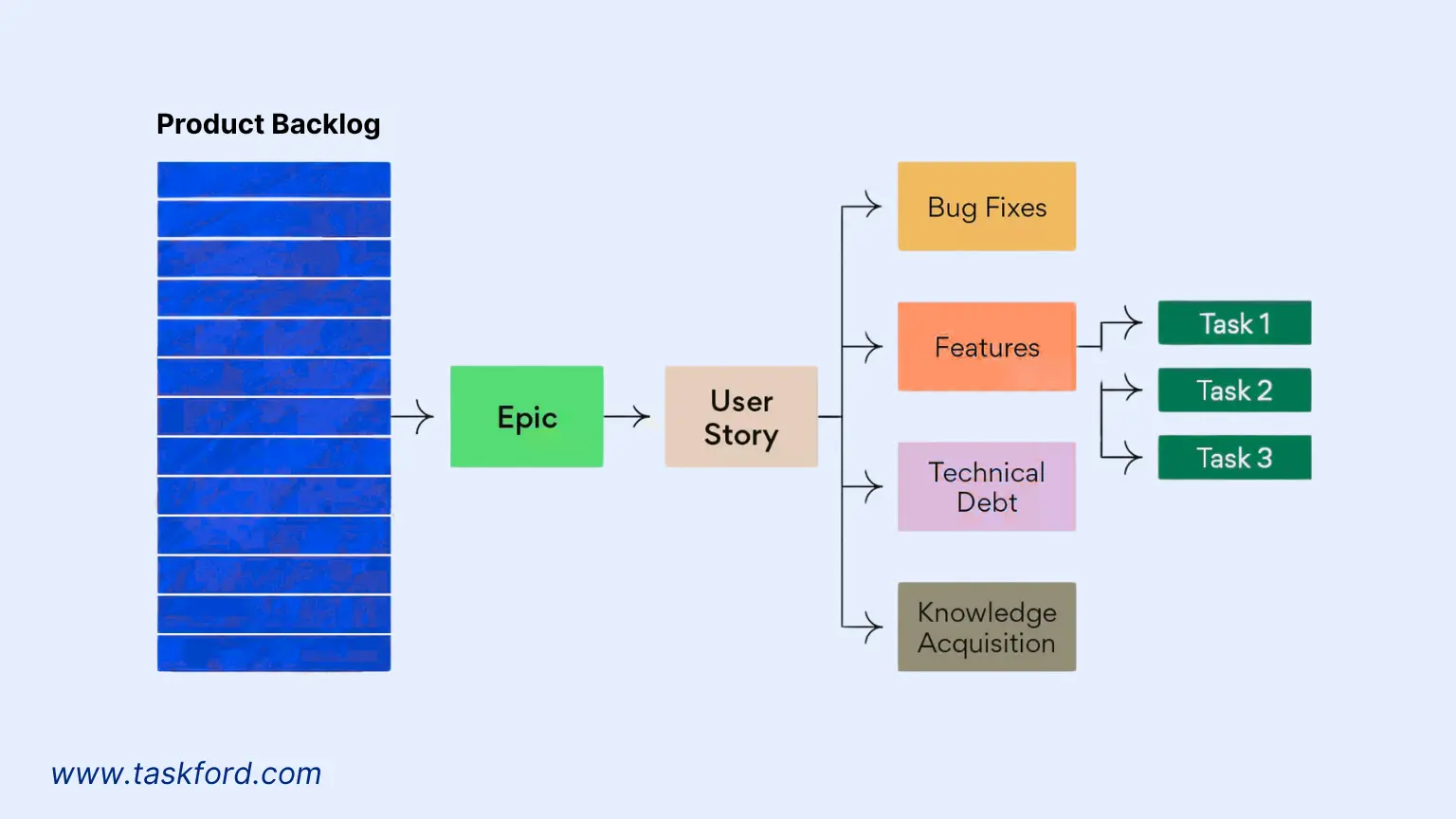
The backlog helps teams keep track of priorities—what’s important now, what can wait, and what’s still under consideration.
11. Baseline
A baseline is the original plan for a project’s scope, schedule, and budget. It acts as a reference point to track how the project is progressing. Think of it as the "starting point" for your project, against which you compare actual performance as the project moves forward.
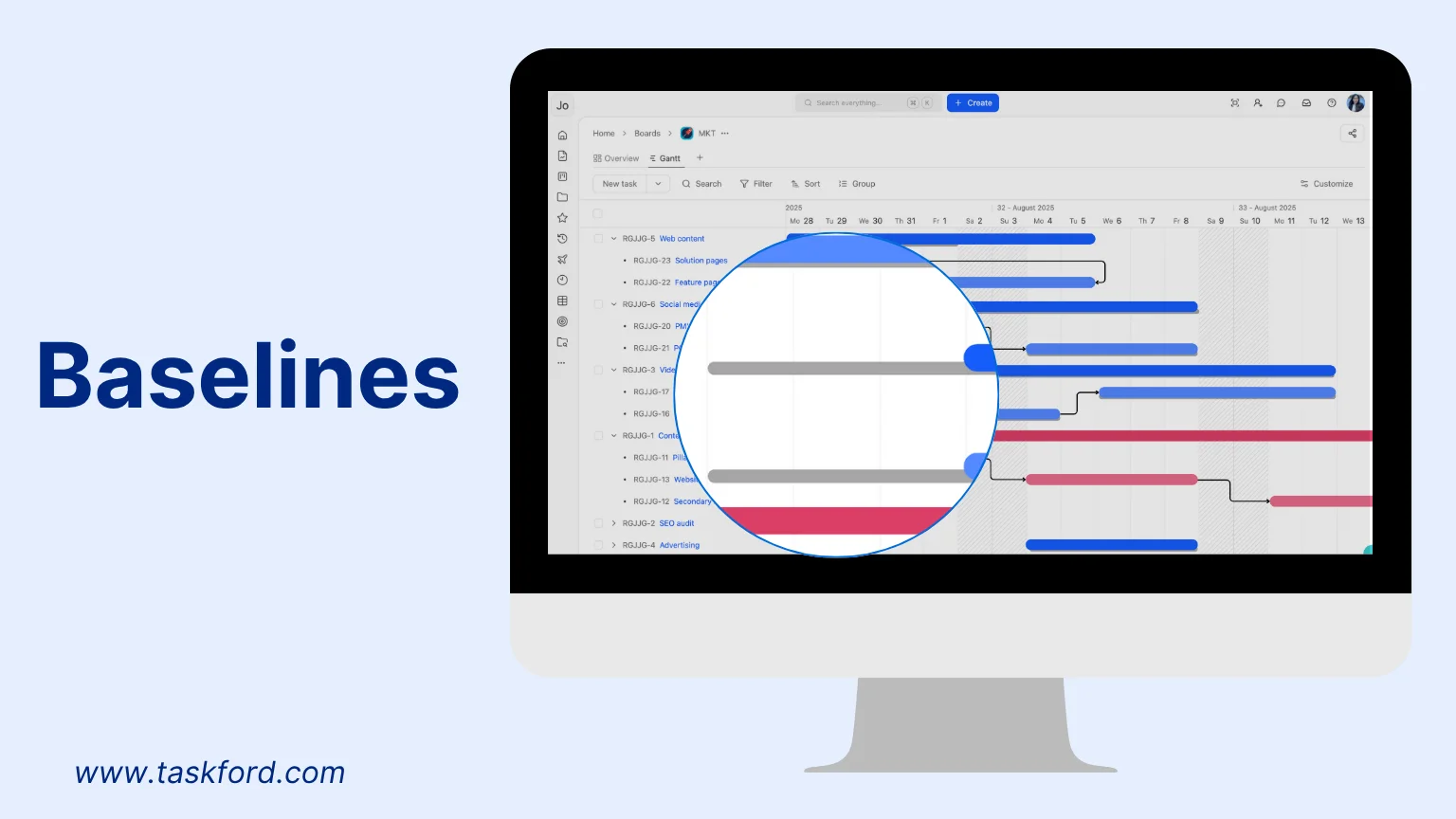
12. Bottleneck
In project management, bottlenecks refers to any point in the project where the flow of work is slowed down or restricted due to a limitation in resources, processes, or capacity. This creates delays and inefficiencies, impacting the overall project timeline and delivery.
- A bottleneck can occur at any stage of a project, such as:
- Resource limitations (e.g., not enough team members or equipment)
- Inefficient processes (e.g., a slow approval process)
- Overloaded tasks (e.g., too many dependencies on one task or individual)
- Technical constraints (e.g., outdated software or systems)
Identifying and addressing bottlenecks is crucial for improving project flow, reducing delays, and ensuring timely delivery.
13. Contingency
A contingency plan in project management is a backup plan with extra time, money, or resources set aside for unexpected problems, such as delays, technical failures, or cost increases. Contingency planning involves estimating potential risks during the planning phase and setting aside reserves (e.g., 10% of the budget) to mitigate disruptions, ensuring the project remains on track despite uncertainties.
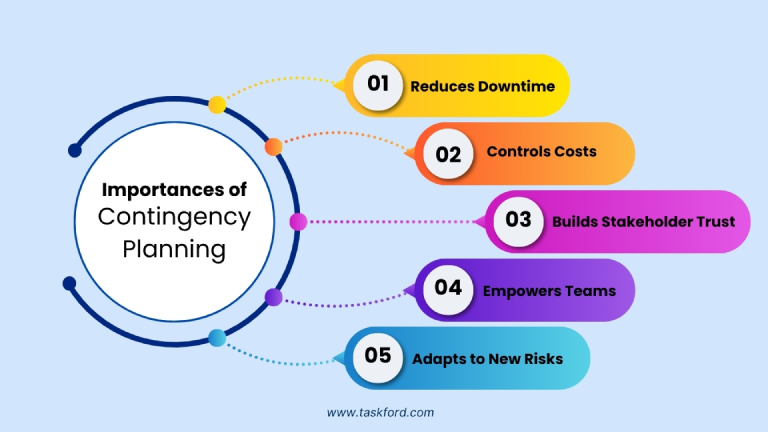
14. Critical Path Method (CPM)
Critical Path Method (CPM) is a scheduling technique that identifies the longest sequence of dependent tasks, known as the critical path, which determines the project’s shortest possible duration. Tasks on the critical path have no float, meaning delays directly extend the project timeline. CPM uses network diagrams and calculations to optimize schedules and prioritize resources.
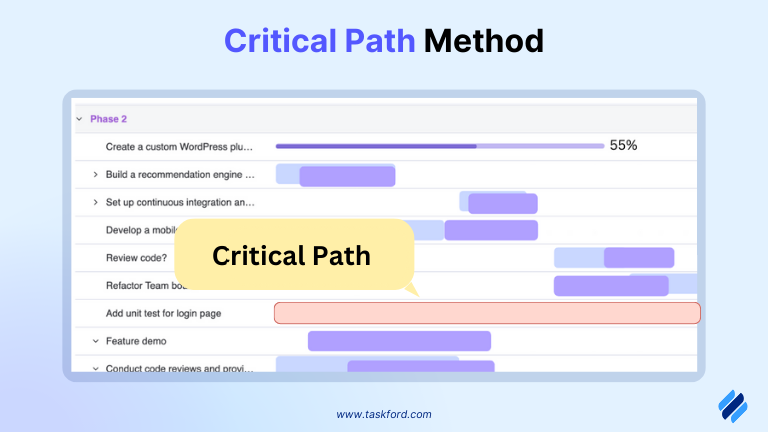
15. Cost Management
Cost Management is the process of planning, estimating, and tracking project expenses to stay within budget. This includes forecasting costs, monitoring spending, and addressing any overruns before they spiral.
16. Gantt Chart
Gantt Chart is a visual project management tool that shows tasks or activities over time. It uses horizontal bars to represent the start and end dates of each task, helping teams track progress and deadlines at a glance.
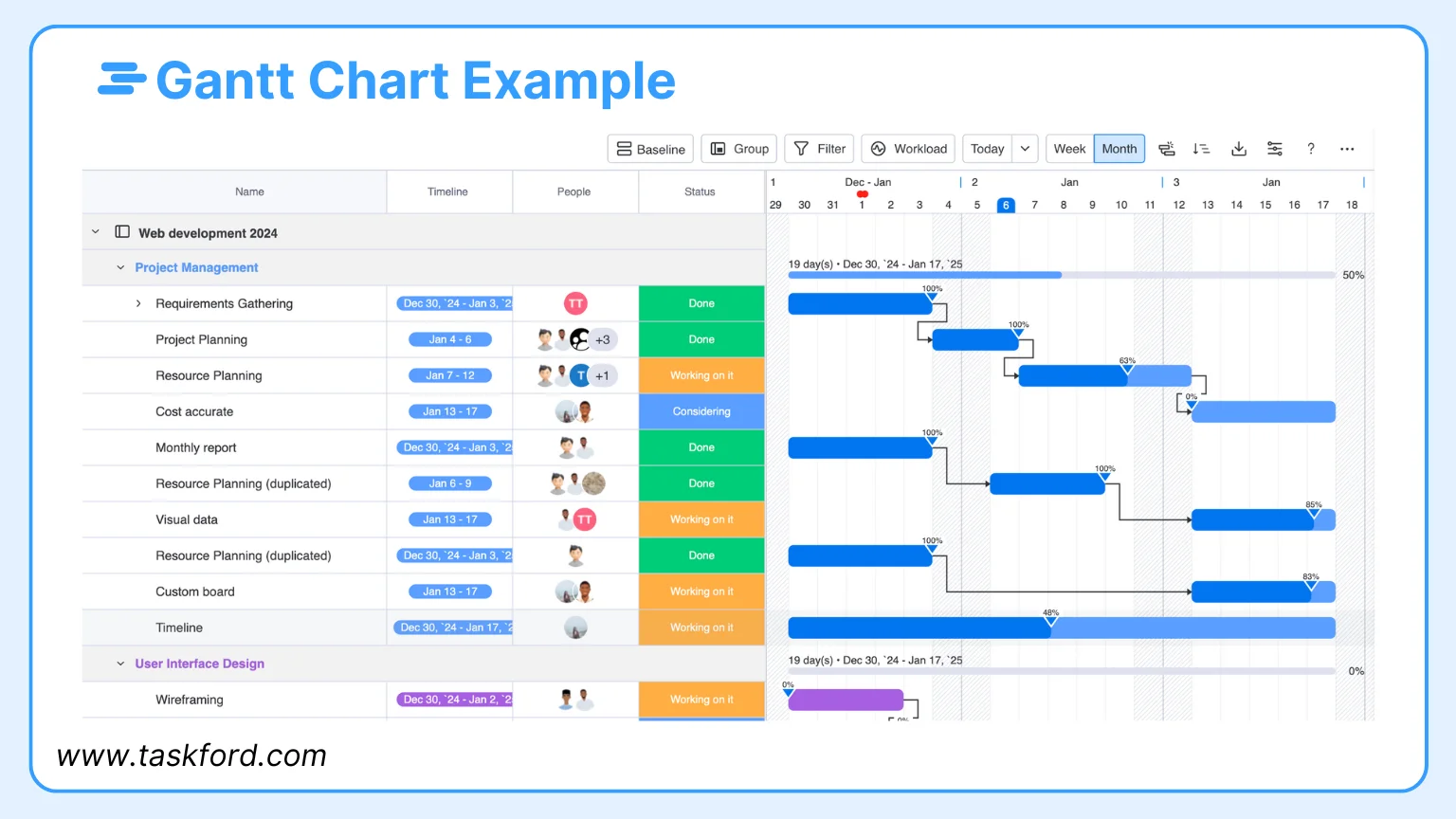
17. Gate Review
Gate review is a formal checkpoint at key project stages, such as the end of planning or execution, to evaluate progress, risks, deliverables, and alignment with objectives. Stakeholders decide whether to proceed, adjust plans, or terminate the project, ensuring accountability and strategic alignment.
18. Float
Float project management is the amount of time a task can be delayed without impacting the project’s overall completion date. Tasks on the critical path have zero float, while non-critical tasks have slack, providing scheduling flexibility that project managers can leverage to optimize resources.
19. Forward Pass Project Management
Forward Pass Project Management. is a technique used to calculate the earliest start and finish times for tasks in a project. By moving forward through the project timeline, it helps determine when each task can begin, based on its dependencies.
This method helps identify the critical path, or the sequence of tasks that must be completed on time to finish the project as planned.
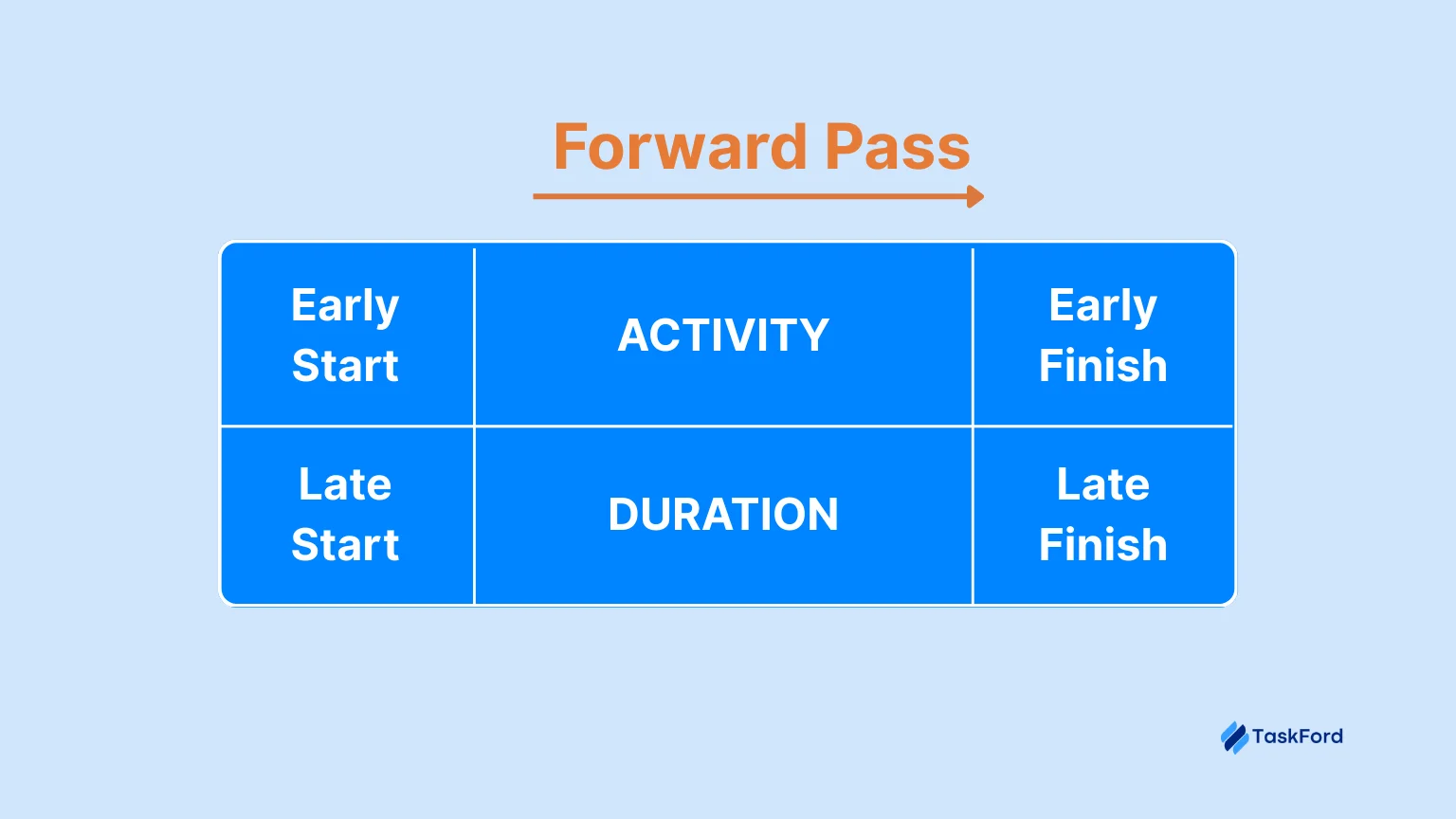
20. Lag/Lead Time
Lag time refers to a delay between two tasks, meaning one task must wait before the next can start. For example, if you need to wait a few days for materials to arrive before starting the next phase, that's lag time.
Lead time, on the other hand, is when one task starts before the previous task is fully completed. It allows tasks to overlap and helps speed up the project.
Both lag and lead time are used to adjust schedules and optimize how tasks are performed in a project.
21. Late Finish (LF)
The latest time a task can finish without delaying the project’s overall completion, calculated during backward pass scheduling. LF helps identify scheduling flexibility and informs resource allocation to avoid delays.
22. Finish-To-Start
Finish-to-start is the most common dependency type, where one task must finish before another can start, ensuring a logical sequence in the project schedule, such as completing design before development.
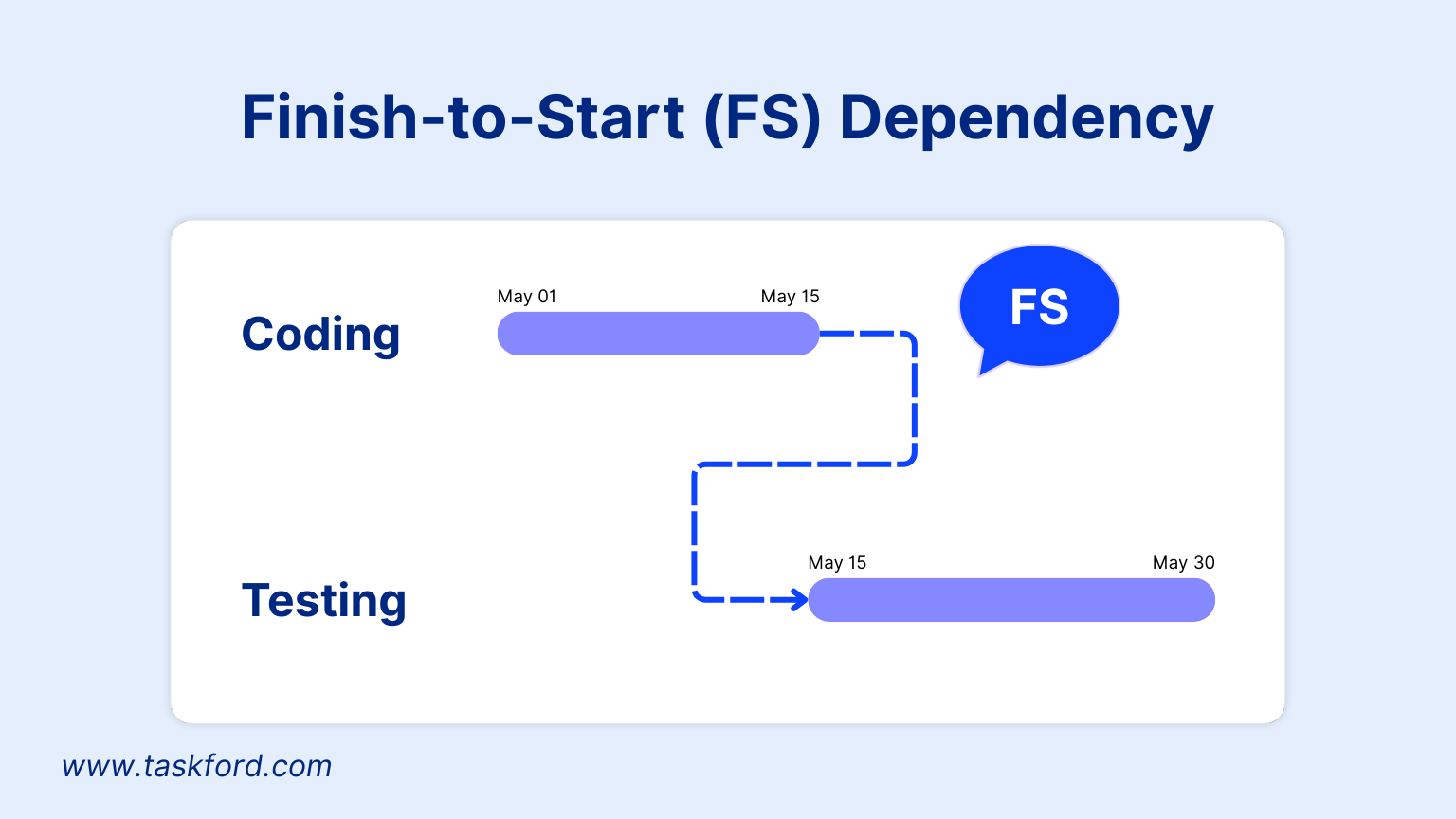
23. Finish-To-Finish
Finish-to-finish is a dependency requiring one task to finish before another can finish, ensuring sequential completion of related activities, often used in projects with tightly coupled tasks like testing and development.
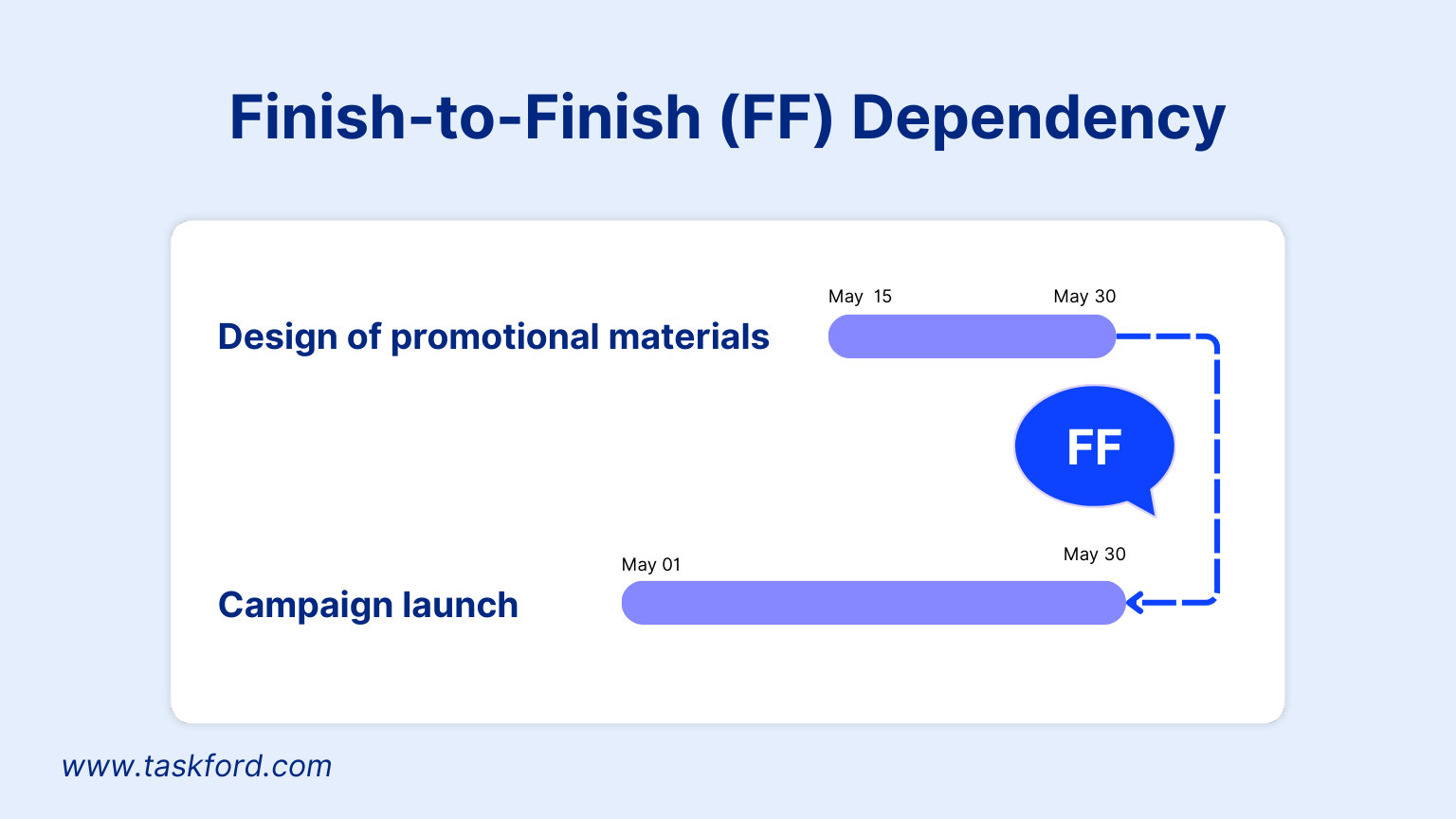
24. Task Dependency
Task dependency refers to the relationship between tasks in a project, where one task must be completed before another can start (or finish). For example, you can’t start building a wall until the foundation is done.
There are different types of task dependencies:
- Finish-to-start: Task B starts after Task A finishes.
- Start-to-start: Task B starts when Task A starts.
- Finish-to-finish: Task B finishes when Task A finishes.
- Start-to-finish: Task B finishes when Task A starts.
Understanding task dependencies helps you plan the project timeline and ensure tasks are completed in the right order.

25. Time Management
Time management is the process of planning and controlling how you spend your time to work more efficiently and productively.
It involves setting priorities, scheduling tasks, minimizing distractions, and meeting deadlines to achieve personal or professional goals.
Project Management Methodology Terms
Different approaches and frameworks used to manage projects:
26. Agile
Agile is a way of managing projects that focuses on flexibility and teamwork. Instead of doing everything at once, Agile breaks work into small chunks called sprints (usually 1–4 weeks), so teams can adjust based on feedback or changes. It’s popular in software development but works for many projects.
Discover more about the beginner's guide to Agile Project Management. Learn key values, roles, frameworks, and how it differs from traditional methods.
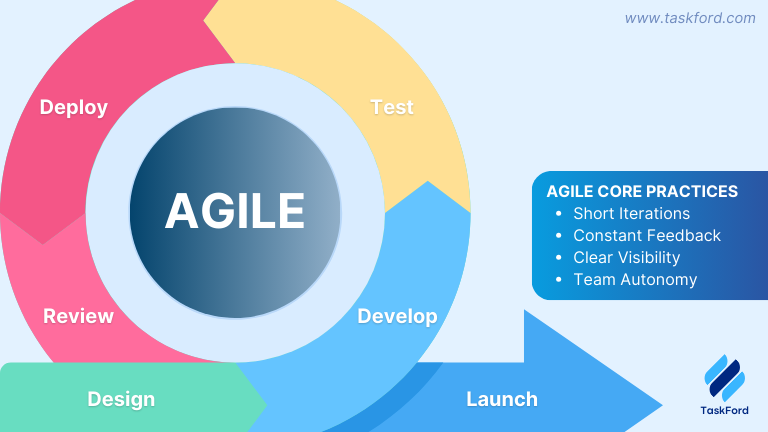
27. Scrum
Scrum is an Agile framework using fixed-length sprints, daily stand-ups, and defined roles (Scrum Master, Product Owner, team) to deliver work incrementally, ideal for projects with evolving requirements like software or product development.
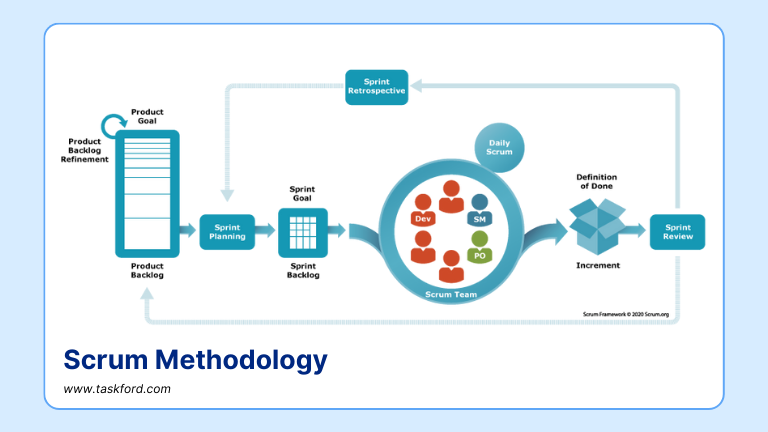
28. Scrum Master
A Scrum Master is a facilitator in the Scrum framework (a type of Agile methodology). Their role is to help the team follow Scrum practices, remove any obstacles blocking progress, and ensure the team works smoothly together. The Scrum Master isn’t a traditional manager but acts as a coach and guide, helping the team stay focused, collaborate effectively, and continuously improve.
29. Sprint
A sprint is a short, time-boxed period (usually 1 to 4 weeks) where a team works to complete a specific set of tasks or deliverables. It’s a key part of the Scrum framework in Agile project management.
Sprint planning happens at the beginning of each sprint, where the team decides which tasks to focus on based on priorities. At the end of the sprint, the team reviews their work, adjusts plans if needed, and prepares for the next sprint.
30. Kanban
Kanban is a visual workflow management method using boards and cards to track tasks through stages like “To Do,” “In Progress,” and “Done.” Kanban emphasizes continuous delivery, limits work in progress, and helps teams identify bottlenecks to optimize efficiency.
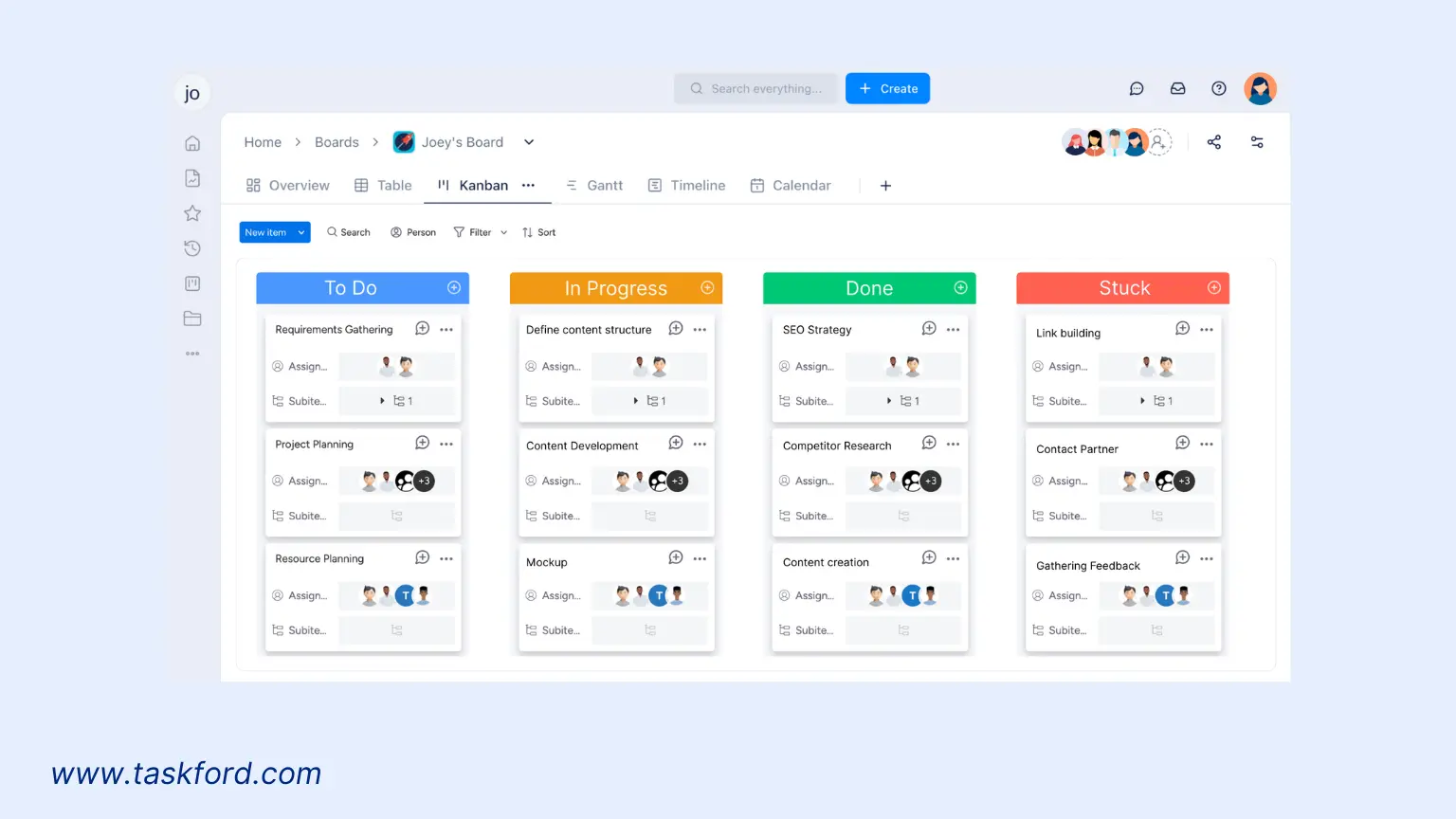
Related: Gantt Chart vs Kanban: Which one is better for your Team's Workflow
31. Waterfall Model
Waterfall is a linear methodology where each project phase (e.g., requirements, design, execution) is completed before the next begins, suited for projects with fixed requirements and minimal expected changes.
32. Lean
Lean project management is a methodology focused on delivering maximum value to the customer by eliminating waste, such as redundant processes, excess inventory, or idle time. Lean emphasizes efficiency, continuous improvement, and streamlined workflows to optimize project outcomes.
33. Hybrid Methodology
Hybrid Methodology combines elements from different project management approaches, such as Agile and Waterfall, to suit a project's specific needs. It blends the flexibility and iterative nature of Agile with the structure and predictability of Waterfall, allowing teams to adapt based on project requirements, complexity, and scope.
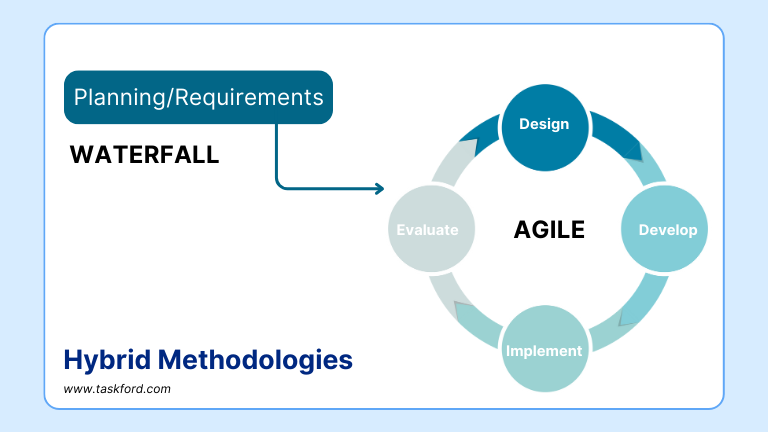
34. Methodology
A structured set of principles, processes, and practices guiding project management, tailored to project needs. Common methodologies include Agile (iterative), Waterfall (linear), Scrum (team-focused), and PRINCE2 (process-driven), each offering distinct approaches to planning and execution.
35. PRINCE2
PRINCE2 is a structured methodology (Projects IN Controlled Environments) emphasizing defined processes, clear roles, and governance. PRINCE2 divides projects into manageable stages with detailed documentation and control points, ideal for complex, high-stakes projects requiring rigorous oversight.
36. Program Management
Program management is the coordinated management of multiple related projects to achieve strategic objectives that individual projects cannot accomplish alone. It focuses on interdependencies, resource sharing, and alignment with organizational goals.
37. Project Management
Project management is the process of planning, organizing, and overseeing tasks and resources to achieve specific project goals. It involves defining the project scope, setting timelines, allocating resources, managing risks, and ensuring that everything stays within budget. The goal of project management is to complete the project successfully, meeting all objectives and stakeholder expectations.
38. Project Portfolio
A collection of projects grouped to achieve strategic business objectives, such as innovation or cost reduction. Portfolios are managed collectively to optimize resource allocation and align with organizational priorities.
39. Project Portfolio Management
Project Portfolio Management is the centralized management of a project portfolio to prioritizing projects, allocating resources, and ensuring alignment with organizational strategy. It involves balancing risks, costs, and benefits to maximize value across projects.
40. Project Lifecycle
Project lifecycle is the sequence of phases a project undergoes: initiation, planning, execution, monitoring, and closure - each with specific tasks, deliverables, and objectives. The lifecycle provides a structured framework for managing projects from start to finish.
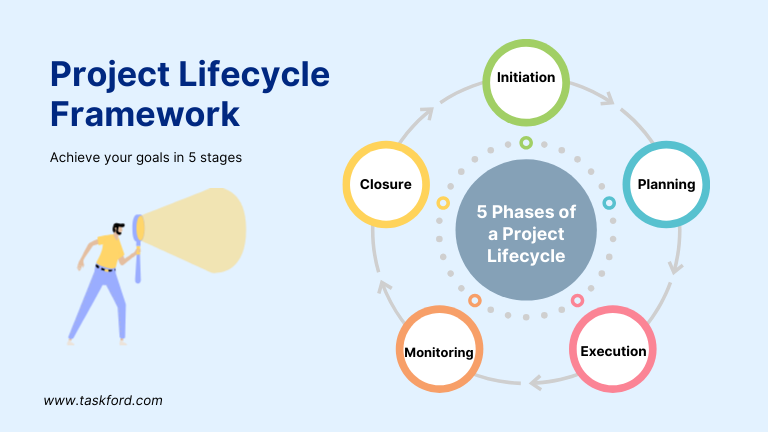
41. Retrospective
Retrospective Meetings is a meeting held at the end of a project, sprint, or milestone where a team reflects on what went well, what didn’t, and how to improve moving forward. It’s a key part of agile project management, promoting continuous learning and team growth.
42. User Stories
User Stories are short, simple descriptions of a feature or requirement written from the end user’s perspective, used in Agile to define functionality and guide development, typically following the format “As a [user], I want [function] so that [benefit]
Measurement and Reporting Terms
43. Key Performance Indicator (KPI)
A Key Performance Indicator (KPI) is a measurable value that shows how effectively a project or business is achieving its key objectives. KPIs help project managers and teams track progress and success in specific areas like time, cost, quality, and customer satisfaction.
For example, a KPI for a construction project might be “percentage of tasks completed on time.”
44. SMART Goals
Smart Goals that are Specific, Measurable, Achievable, Relevant, and Time-bound provide clarity and focus to guide project activities and ensure measurable outcomes.
45. Earned Value Management (EVM)
Earned Value Management (EVM) is a project management technique used to assess a project's performance by comparing the planned progress with the actual progress. It tracks three key metrics:
- Planned Value (PV): The budgeted cost for the work scheduled to be completed by a certain time.
- Earned Value (EV): The budgeted cost for the work actually completed by that time.
- Actual Cost (AC): The actual cost incurred for the work completed by that time.
By comparing these values, EVM provides insight into whether a project is ahead, on schedule, or behind, and whether it’s under or over budget. It helps project managers make informed decisions and take corrective actions if needed.
46. Velocity
Velocity is a key metric in Agile project management that measures the amount of work a team completes during a sprint or iteration. It is typically expressed in units like story points, user stories, or tasks, depending on how the team estimates work. Velocity is calculated by adding up the total number of story points or tasks completed during the sprint.
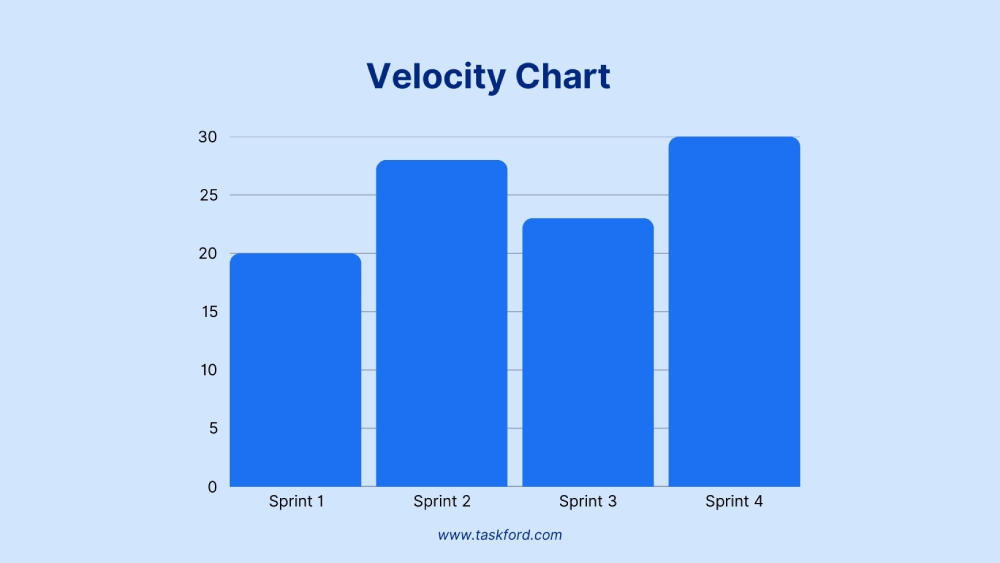
47. Utilization Rate
Utilization rate is the percentage of available time that a person or resource is actively working on productive tasks, often billable work.
It’s calculated as:
(Actual productive time ÷ Total available time) × 100
This metric helps assess efficiency and optimize resource allocation.
48. Quality Assurance (QA)
Processes like audits, reviews, and standards checks are used to ensure deliverables meet predefined requirements and stakeholder expectations before delivery. QA focuses on preventing defects through proactive measures during project execution.
49. Quality Control
Inspections, tests, or measurements to verify that deliverables are defect-free and meet quality standards, typically conducted during or after task completion to ensure compliance with specifications.
50. Burn-down Chart
Burndown Chart is a visual tool in Agile that graphs the amount of work remaining in a sprint or project against time. The chart’s downward slope shows progress, helping teams predict whether they’ll meet deadlines.
For example, a burn-down chart might show 50 story points left at the start of a sprint, dropping to 10 by the end.
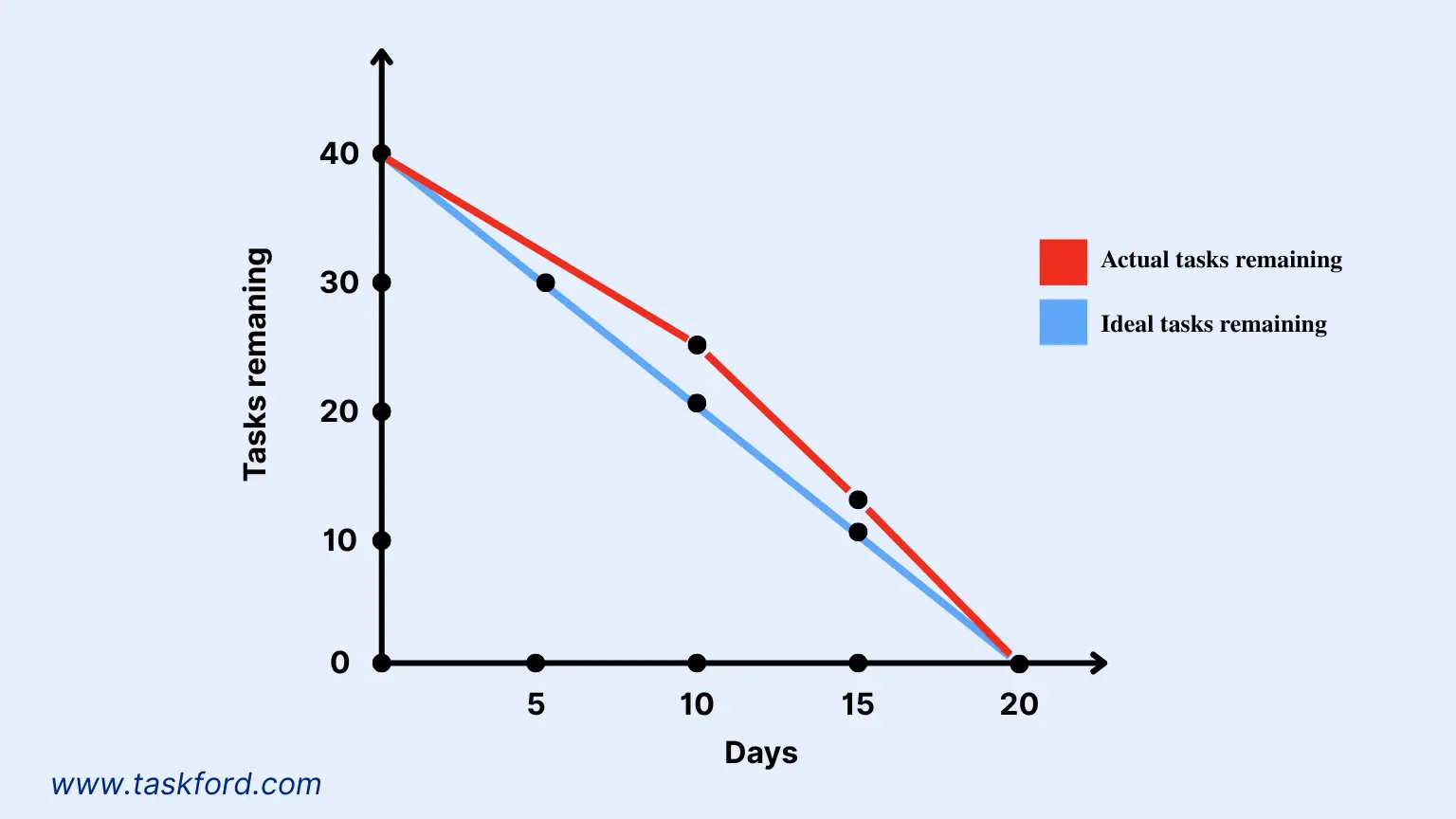
51. Decision Matrix
Decision Matrix is a tool for evaluating and prioritizing options by assigning weighted scores to criteria such as cost, time, quality, or risk. The matrix organizes data in a grid, enabling objective comparisons to support informed decision-making, particularly when selecting vendors, tools, or project approaches.
52. Impact Matrix
A risk assessment tool that maps risks on a grid based on their likelihood and potential impact, enabling prioritization of mitigation efforts. High-likelihood, high-impact risks receive immediate attention to minimize their effect on project success.
53. SWOT Analysis
A strategic planning tool evaluating a project’s Strengths, Weaknesses, Opportunities, and Threats to inform decision-making, risk management, and resource allocation.
54. X-Bar Control Charts
Statistical tools used in quality control to monitor process stability by tracking the average (X-bar) of a sample over time, identifying variations that may affect deliverable quality.
55. Yield Rate
The percentage of outputs meeting quality standards in a project process, used to assess efficiency and quality performance, particularly in manufacturing or production projects.
Resource and Team Management Terms
56. Resource Management
Resource management is the process of planning, allocating, and monitoring the use of resources such as people, equipment, money, and materials, to ensure they are used efficiently and effectively throughout a project or operation. It helps avoid overuse, underuse, or conflicts, and supports better decision-making and project success.
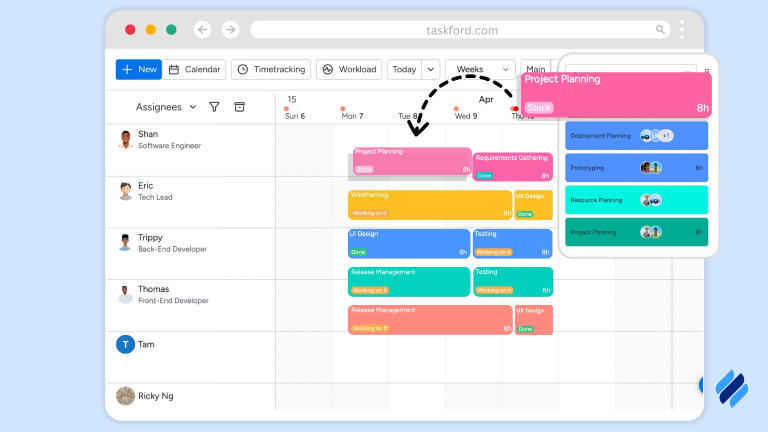
57. Resource Allocation
Resource allocation is the process of assigning specific resources, such as personnel, equipment, or budget, to project tasks based on availability, skills, and project requirements, ensuring tasks are completed efficiently.
58. Resource Planning
Resource planning is the process of determining the type, quantity, and timing of resources needed for a project. It ensures that the right resources are available when required, helping to prevent delays, minimize shortages, reduce costs, and maximize efficiency.
59. Resource Breakdown Structure
Resource Breakdown Structure is a hierarchical chart categorizing resources (e.g., personnel, equipment, materials) needed for a project, facilitating planning, allocation, and tracking of resource usage across tasks.
60. Human Resource Management
The process of planning, recruiting, training, and managing team members to ensure the project has the necessary skills, capacity, and motivation. It includes role assignments, conflict resolution, and performance monitoring to foster collaboration and productivity.
61. Governance
Governance is the framework of policies, roles, processes, and decision-making structures ensures that a project aligns with organizational objectives. Governance defines authority levels, accountability, and oversight mechanisms, such as a steering committee approving major changes, to maintain project control.
62. RACI Chart Method
RACI chart is a matrix assigning roles - Responsible (performs the task), Accountable (owns the outcome), Consulted (provides input), Informed (receives updates) for each project task, clarifying responsibilities and preventing overlaps or gaps.
63. Hierarchy Structure
A visual representation of a project’s organization, roles, or tasks, such as an organizational chart for team reporting lines or a Work Breakdown Structure for task decomposition. It clarifies relationships, responsibilities, and the project’s structural framework.
64. Organizational Project Management
Organizational Project Management is a strategic approach that aligns projects, programs, and portfolios with an organization’s overall goals and objectives. It ensures that projects contribute to the broader business strategy and that resources are managed effectively across all projects.
OPM includes frameworks, processes, and tools to standardize project management practices, enabling organizations to manage multiple projects simultaneously while optimizing results. By adopting OPM, organizations can improve project delivery, resource allocation, and overall business success.
65. Enterprise Project Management (EPM)
Enterprise Project Management (EPM) is a strategic approach to managing multiple projects across an organization, aligning them with business objectives. EPM coordinates resources, schedules, and priorities using portfolio management software, ensuring projects collectively support long-term goals like revenue growth or innovation.
66. Enterprise Resource Planning (ERP)
Enterprise Resource Planning (ERP) is software that integrates core business processes, such as finance, human resources, and supply chain, often used in project management to track budgets, allocate resources, and monitor schedules. ERP systems like SAP or Oracle provide real-time data for informed decision-making across projects.
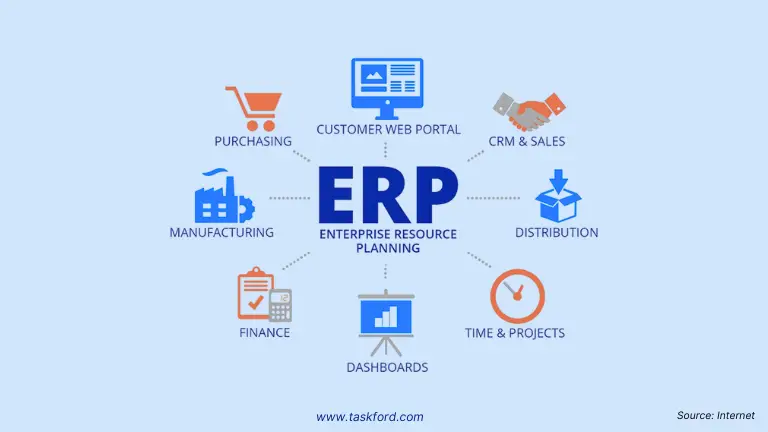
67. Change Management
Change Management is the process of planning, implementing, and managing changes within an organization or project. It involves preparing and supporting people, teams, and systems to adapt to new processes, tools, or ways of working. The goal is to minimize disruption, ensure a smooth transition, and help individuals embrace change successfully.
68. Daily Stand-up
A brief (typically 15-minute) daily meeting in Scrum where team members share recent progress, planned tasks for the day, and any obstacles hindering their work. Conducted standings to encourage brevity, and stand-ups promoted team alignment, rapid problem-solving, and accountability, ensuring the sprint stays on course.
69. Indirect Costs
Expenses not directly attributable to a specific project task, such as utilities, office rent, or administrative salaries. These costs are allocated across projects based on factors like time or resource usage, requiring careful tracking to ensure accurate budgeting.
Advanced Project Management Concepts
70. Work Breakdown Structure (WBS)
Work Breakdown Structure (WBS) is a hierarchical decomposition of a project’s total scope into smaller, more manageable components (deliverables and work packages).
- Hierarchical: Breaks the project into levels, from high-level deliverables down to individual tasks.
- Deliverable-oriented: Focuses on what needs to be delivered rather than how it’s done.
- Foundation for planning: Serves as the basis for estimating costs, assigning resources, scheduling, and tracking progress.
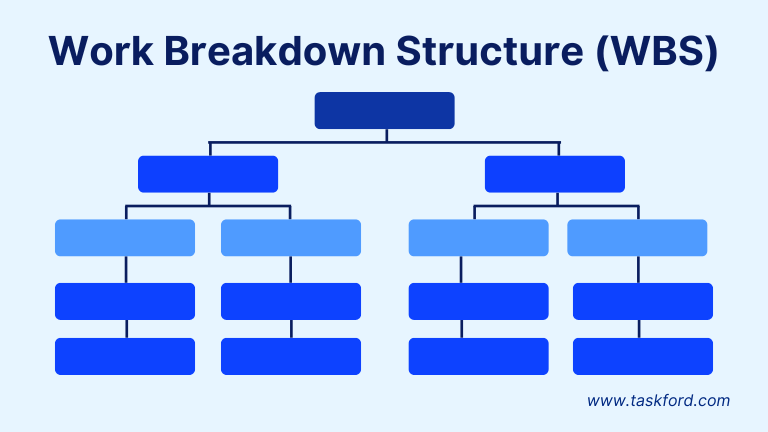
71. Work Package
A work package is a small, manageable unit of work within a project, typically defined in the Work Breakdown Structure (WBS). It represents a specific deliverable or task that can be assigned to a team or individual. Work packages are often used to break down larger project tasks into more detailed and actionable parts, making it easier to estimate time, resources, and costs.
Work packages are usually:
- Clearly defined with specific goals and outcomes
- Measurable and trackable
- Assigned to a responsible team or individual
- A key element for effective project planning and control
72. MVP (Minimum Viable Product)
A basic version of a product with essential features, released to test with users and gather feedback for iterative development. MVPs minimize initial investment while validating concepts and informing future enhancements.
73. OKR (Objectives and Key Results)
A goal-setting framework defines qualitative objectives (what to achieve) and quantitative key results (how to measure success). OKRs align teams with project and organizational goals, fostering focus and accountability.
74. Wireframe
A wireframe is a visual blueprint or skeletal layout of a website, application, or system. It represents the basic structure and functionality of a page, focusing on elements like navigation, content placement, and user interface (UI) components. Wireframes are usually simple and lack detailed design elements like colors or images, serving as a tool to plan the user experience (UX) and ensure the layout meets functional requirements before development begins.
75. What-if scenario analysis
What-if scenario analysis is a technique used in project management to evaluate potential outcomes based on different assumptions. It helps project managers predict how changes in variables—like budget, resources, or deadlines—could impact the project.
For example, you might ask, "What if we have to reduce the budget by 10%?" or "What if a key team member is unavailable for a week?" By exploring these "what if" scenarios, project managers can identify risks, make better decisions, and plan for possible challenges before they arise.
76. PERT (Program Evaluation and Review Technique)
PERT (Program Evaluation and Review Technique) is a project management tool used to plan and schedule complex projects. It focuses on analyzing the time needed to complete each task and identifying the minimum time required to finish the entire project.
- Uses three time estimates for tasks:
- Optimistic (O) – best-case scenario
- Pessimistic (P) – worst-case scenario
- Most Likely (M) – realistic estimate
- Expected Time (TE) = (O + 4M + P) ÷ 6
- Helps identify the critical path and manage project uncertainty
77. Portfolio, Program, and Project Management Maturity Model (P3M3)
A framework for assessing and improving an organization’s project management capabilities across processes, skills, tools, and governance. P3M3 helps organizations progress from ad-hoc to optimized practices, enhancing efficiency and success rates.
78. Zero-Based Budgeting (ZBB)
A budgeting method requiring every expense to be justified from scratch for each project phase, ensuring costs align with current priorities, and eliminating unnecessary expenditures.
79. Graphic Evaluation and Review Technique (GERT)
A network modeling method for projects with complex, probabilistic dependencies, allowing loops and conditional branching. Unlike CPM, GERT is suited for research or innovative projects with uncertain task outcomes, providing flexibility in planning and analysis.
80. Risk Management
The process of identifying, assessing, prioritizing, and mitigating risks to minimize their impact on project success, documented in a risk register with mitigation strategies and contingency plans.
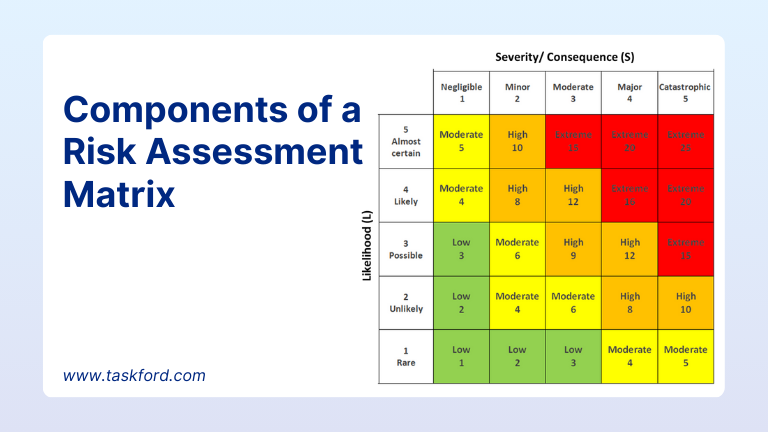
Conclusion
Grasping these 80 project management words gives you a clear foundation for navigating the complexities of any project. From the flexibility of Agile to the detailed organization of a Work Breakdown Structure, each term helps you understand the processes, tools, and roles that drive successful outcomes. Whether you’re just starting out or looking to deepen your knowledge, this shared language makes it easier to collaborate with teams, address challenges, and keep projects on track. Use this guide as a reference to better understand the concepts behind effective project management and apply them to your work with confidence.
Making work simpler,
smarter, and more connected
Join our waitlist and be notified first.

Related Blog
Subscribe for Expert Tips
Unlock expert insights and stay ahead with TaskFord. Sign up now to receive valuable tips, strategies, and updates directly in your inbox.


